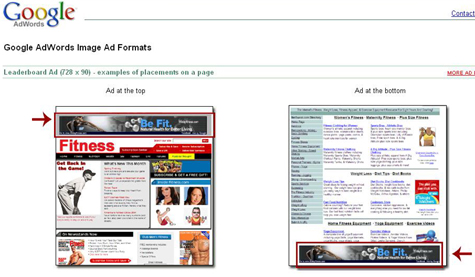Google: $3.1 billion cash for Web monopoly!

ALSO: Google DoubleClick marriage (can be) risky business
UPDATE: "Google (will be) a monopoly" I underscored earlier this month; Frugal Google is putting up $3.1 billion of its own cash to make it happen, soon. Google has reached an agreement to buy DoubleClick.
Want to know the future? A Google-DoubleClick future? Read on:
Google TO BE a Monopoly!
April 2, 2007: Is Google ‘The Internet’?: The ramifications of Google’s 50%+ search market share permeate the Web’s entire ecosystem, I underscored to mark the Google New Year.
Google’s permeation may become even denser, if its rumored acquisition of banner ad serving firm DoubleClick comes to pass.
Not only do the overwhelming majority of Websites depend upon Google for their traffic—via “free” SEO and paid AdWords—Google drives advertising revenues for a seeming majority of Websites via its AdSense contextual ad serving network.
An apt post April Fools’ Day irony is that even DoubleClick former CEO Kevin Ryan relies on text ads served by Google AdSense as his advertising supported Web 2.0 ShopWiki business model, not banner ads served by DoubleClick’s Dart.
(See DoubleClick veteran Kevin Ryan wants to pay you $50 for your video).
Google is already ubiquitous with its “Ads by Goooooogle” on many, many, many a Web page and on many, many, many a spots on the Web pages.
Google advises its AdSense publisher partners: “Maximize ad space with multiple ad units”:
Multiple ad units can help optimize your performance by leveraging our large inventory of ads. You can place up to three ad units per page, in addition to one link unit and two referral units per product.
Sound like (more than) enough Google advertising for a single Web page? Not for Google.
In Google’s never ending quest to organize all the world’s advertising, it is developing a new Pay Per Action (PPA) online ad serving network which will be served to Web pages in addition to its current “up to three ad units per page, plus one link unit and two referral units per product.”
But is there really any room left on Web pages for more Google Ads? No Google problem, the ads will be in the content!
In “Is Google doing advertising evil with new model?” I analyze Google’s new PPA “embedded” ad format.
Google on its new text link format for pay-per-action ads:
Text links are hyperlinked brief text descriptions that take on the characteristics of a publisher's page. Publishers can place them in line with other text to better blend the ad and promote your product.
For example, you might see the following text link embedded in a publisher's recommendatory text: "Widgets are fun! I encourage all my friends to Buy a high-quality widget today." (Mousing over the link will display "Ads by Google" to identify these as pay-per-action ads)…just use your brand name to offer maximum flexibility to the publisher.
With Google’s impending embedded text link pay per action ad network and its existing contextual text ad network, what is missing for 100% Google coverage of online advertising distribution?
Banner ad serving!

Google already offers what it calls Image Ad formats and Video Ad formats for serving to its AdSense publisher partners:
As a publisher, running a combination of image and text ads expands the available ad inventory for your site, and offers the potential for increased revenue. Google's technology determines on a page-by-page basis whether text ads, image ads, or video ads are likely to make you more money, and serves the appropriate format to your page.
Although Google reigns supreme in the category it catapulted to online advertising fame—PPC text ads---it has not achieved similar success with “image ad” serving.
The acquisition of a dedicated banner ad serving firm such as DoubleClick, with its established clientele, would complete a virtuous circle of powered by Google online advertising:
Pay For Performance Text Ads,
Pay For Action Referral Ads,
Pay For Delivery Display Ads!
All on the same (Web) page and on all of the Web’s pages, Googley monopoly style!
ALSO: Google DoubleClick merger: Who wins, who loses and Google DoubleClick marriage (can be) risky business and Google to tag users across Web: Privacy Boomerang? and Microsoft vs. Google: Will MSN, Windows Live compete? and Google hurts Yahoo with DoubleClick deal